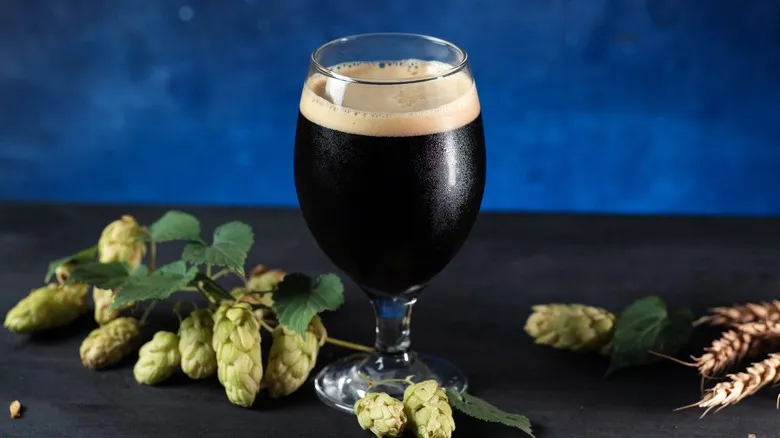History of porter beer
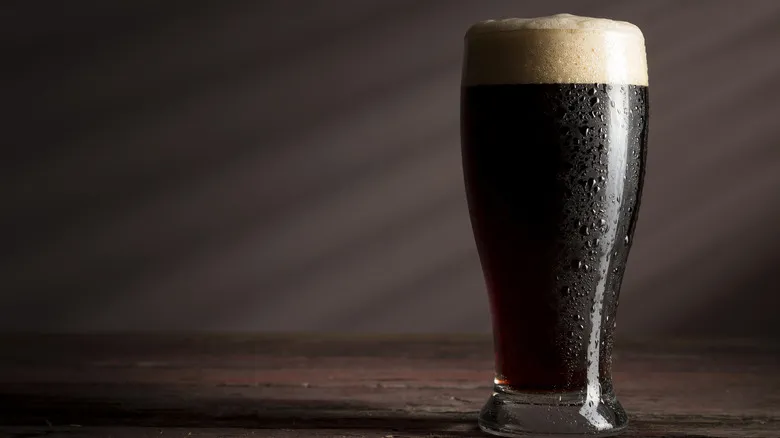
While some beer innovations can be traced back to a single individual (such as the origins of the IPA in the 18th century), the development of porter is linked to a specific time and place. In the 1700s, English pubs featured bartenders, known as "publicans," serving brown ales that they would age on-site. However, brewers soon began to modify their recipes. As times changed, advancements in brewing techniques encouraged experimentation with ingredients, particularly darker malts, and the fermentation process before distributing the beers to pubs. This resulted in a much richer beer than what was previously consumed by Londoners. The name "porter" is derived from the working-class laborers of London, who, as beer historian Martyn Cornell notes, consumed this calorie-rich brew while carrying the burdens that supported society during that period.
When did the shift to "stout" happen? According to Beerwulf, the term "stout" emerged as a way to describe porters with a higher alcohol content. If you ordered a "stout porter" at that time, you would receive a dark ale that appeared similar but had a bolder and more robust flavor. Consequently, this stronger version became far more appealing to drinkers than the original, leading to the rarity of porters by the mid-20th century, if not their near extinction. It took several decades for porters to make a comeback, this time thanks to American brewers experimenting with the unique style.
How is porter beer made?
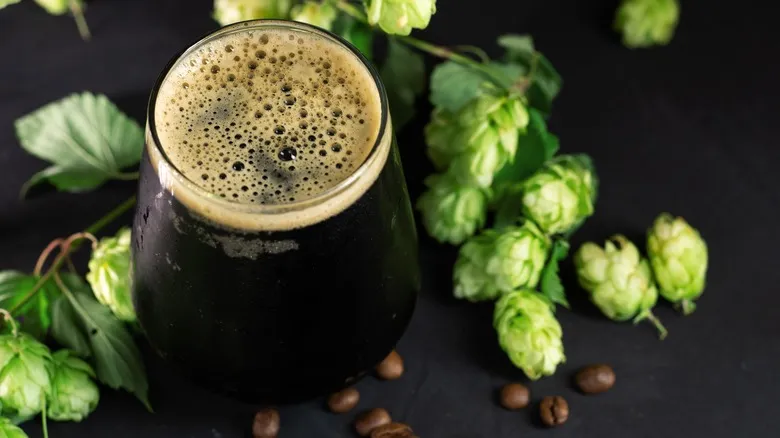
Batches of porter, as noted by Masterclass, rely on a fundamental recipe to give the beer its richness and complexity—comprising water, yeast, and a type of dark malt. The term "malted" refers to the process of soaking the grains in water, which initiates germination, followed by toasting them. This process establishes the core of the brew's body, contributing to the depth and strong aromas that characterize porters in general.
"Like all ales, porters are made using top-fermenting ale yeast," explains Natalie Cilurzo, president of Russian River Brewing. This refers to the brewing process where the active microorganisms rise to the surface of the vat instead of sinking. According to Edelson, the hop character is typically subtle in the traditional recipe, although contemporary breweries often adjust the hop ratios and varieties to suit their preferences.
Edelson points out that the process of making porter is fundamentally similar to that of most beers, regardless of any additional hops or ingredients included in the mix. Stouts are also produced using the same four primary ingredients, making their recipes nearly identical by that standard.
The difference between porter and stout

Now that we've established some foundational knowledge, let's delve into the essential characteristics that define porters and stouts. Beer connoisseurs typically identify a porter by its malt content and a lower alcohol by volume (ABV). On average, a pint usually contains around 4% to 5% ABV, although some variations, particularly imperial styles, break from tradition with higher alcohol levels than a classic stout. Porters exhibit a chocolatey color that can range from dark brown to deep mahogany, in contrast to the nearly opaque blackness commonly found in stouts. While stouts are also dark and feature spiced, espresso-like notes, it is the un-malted roasted barley that imparts their distinctive, bolder flavor, especially when compared to the smoother profile of porters.
Another aspect to consider when evaluating your pint is its geographical origin. Although both beverages originated in the U.K., stouts gained popularity in Ireland, partly due to the establishment of Arthur Guinness's renowned brewery. In contrast, porters are closely associated with English preferences. "Historically, Britain, and specifically London, is regarded as the birthplace of porter," notes Edelson.
What does porter beer taste like?
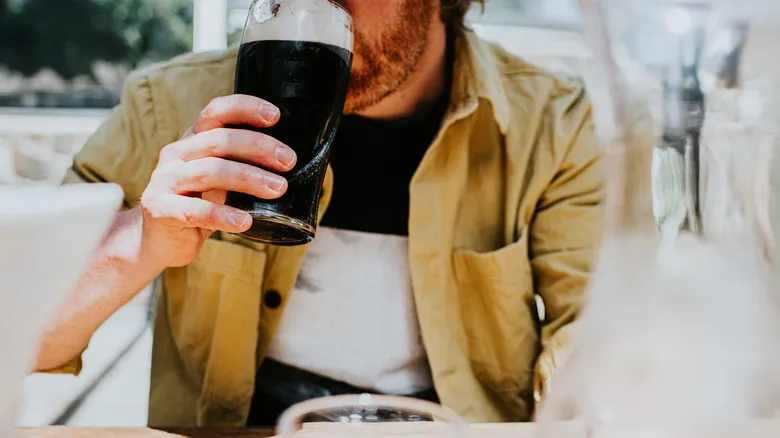
Now that we've discussed the background and composition, let's delve into the flavor profile of the porter. The presence of malted barley lends a sweet, confectionery quality to each pint. Caramelized and toffee-like notes blend seamlessly with richer base flavors, predominantly chocolate and subtle mocha undertones. As the malts linger on the palate, their aromatic qualities are enhanced by hops that introduce a touch of acidity. A slight bitterness reminiscent of dark chocolate or brewed coffee is evident, as noted by Lowercase Brewing, and the carbonation is gentle and subdued.
Mark Edelson, a brewer at Iron Hill Brewery, refers to the "fear of the dark" that makes some hesitant to try porters. Visually, they bear no resemblance to the light amber ales typically enjoyed at sporting events and picnics. However, the opaque appearance is merely a façade; Edelson asserts that "most are medium-bodied and highly drinkable beers," making the experience surprisingly pleasant for the palate.
While these rich, coating characteristics are also found in stouts, the roasted barley in porters brings forth deeper coffee flavors and a more pronounced acidity. Cilurzo advises, "If you're seeking more roasty, toasty flavors and aromas, opt for a stout. But if you prefer chocolate, malt, and a touch of sweetness, a porter is the way to go."
Cooking -- and baking -- with porter beer

According to culinary experts, porter is a favored beer for incorporating into recipes—and for good reason. Using it in cooking enhances the richness and complexity of your dishes, particularly those that are packed with savory flavors. Its inviting spiced aromas complement comfort foods beautifully, especially when paired with protein-rich ingredients. Stews, roasts, and grilled barbecue are perfect options for infusing additional flavor. "You can't go wrong by adding half a can of porter to a pot of chili, or if you're feeling adventurous, braise some short ribs in a quality porter," Young suggests. "Serve it over a bed of mashed potatoes with a vegetable, and you'll impress everyone."
From Edelson's viewpoint, home cooks should exercise caution when using porter, as "heating and reducing it can intensify the bitterness of the roasted malts." Instead, he recommends using it to enhance secondary elements—according to Cilurzo, this could mean a rich glaze or sauce. For the Beer-Brined Pork Chops served at Iron Hill Brewery, they combine Pig Iron Porter (5.4% ABV) with real maple syrup to create a brine. This process infuses the meat with a robust flavor while adding a caramelized quality that enhances its juiciness.
Consider adding some porter to your homemade barbecue sauce for ribs, or incorporate it into your scratch-made brownies to truly impress at your next potluck.
Foods to pair with porter beer

Enjoying a brew down to the last drop is certainly pleasurable. However, there's no denying that a perfect beer pairing can elevate the experience to extraordinary heights. The rich, decadent flavors of porter complement a menu filled with hearty dishes, and since spicy foods and beer are a match made in heaven, embracing bold flavors is essential. Edelson suggests pairing prime cuts of steak and Mexican sauces like Mole as excellent choices. Young prefers a pizza topped with jalapeños, hot honey, and crispy pepperoni.
What if you have a craving for something sweet? The creamy texture of porter enhances the experience when paired with baked goods, especially those featuring chocolate (though peanut butter and coconut also make great companions). "Chocolate desserts are very popular with Porters due to their complementary aromas and flavors," notes Cilurzo.
Earthy, robust foods shine alongside the porter's velvety richness, and the combinations are virtually endless. If you're seeking inspiration, the internet is filled with enticing ideas. Create a charcuterie board featuring cheeses like Gruyere or Stilton for a nutty twist, or indulge in a succulent pork tenderloin, as recommended by Cilurzo. Of course, a show-stopping dessert will pair beautifully with porter, so why not go all out with a slice of chocolate peanut butter pie?
Where to buy porter beer
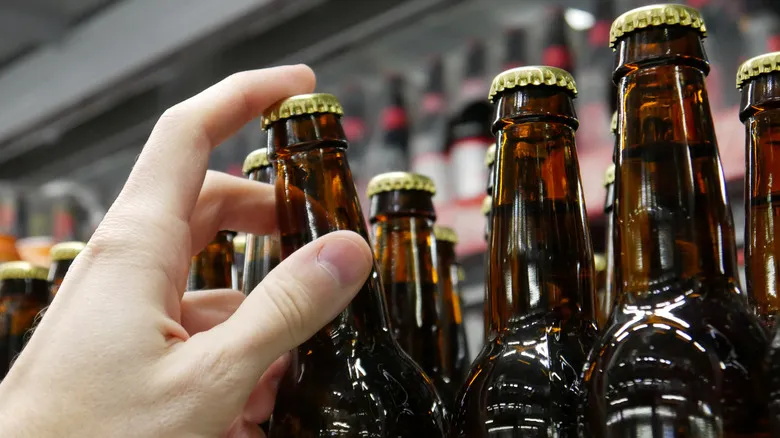
Are you on the hunt for your next six-pack? Nowadays, many retailers authorized to sell alcohol offer a diverse range of options, from imperial ales to pilsners and ciders. It's definitely worth checking out local grocery stores to see what they have available. Even better, look for bottle shops in your area that specialize in unique and innovative beverages. When it comes to choosing where to buy your porter, Edelson notes that "it ultimately comes down to personal preference, convenience, and availability."
However, it's essential to find reliable retailers to avoid purchasing drinks that may be stale or spoiled. As Cilurzo points out, "Beer is a highly perishable product," and how a retailer manages it can significantly impact its freshness and quality. For this reason, visiting your local brewery is always a great option, and Young strongly recommends it. "I would prioritize my local breweries and get the beer fresh from the source," he suggests.
If you find that the craft beer scene in your area isn't as vibrant as in other cities known for their excellent porters, consider ordering your drinks online for a wider selection. Just be sure to familiarize yourself with the liquor laws in your state, as they can vary significantly.
Common varieties of porter beer

As you explore the variety of choices available at the taproom, you'll find numerous styles of porter on the market. The classic option is the English porter, characterized by its caramelized, roasted flavors with a hint of bitterness; in the British Isles, it's simply known as "porter." Robust and Brown porters are variations of the traditional style, according to Vinepair, while American porters often take a bolder approach, incorporating more hops and various adjuncts like honey, vanilla, oats, and cherries. For those who enjoy more adventurous flavors, the Baltic Porter offers a unique experience with its rich notes of molasses or stone fruits and a crisper texture, thanks to the use of lager yeast and cold fermentation.
Not sure which one to choose? Craft beer enthusiasts like Young recommend sampling a variety whenever they visit a pub, but it's always a good idea to go with what naturally appeals to you. For Edelson, a classic London porter is always satisfying with its consistent ABV and balanced sweetness. On the other hand, Cilurzo and Young prefer the more intense flavors found in robust and Baltic-style porters, respectively.
The use of malts distinguish the porter
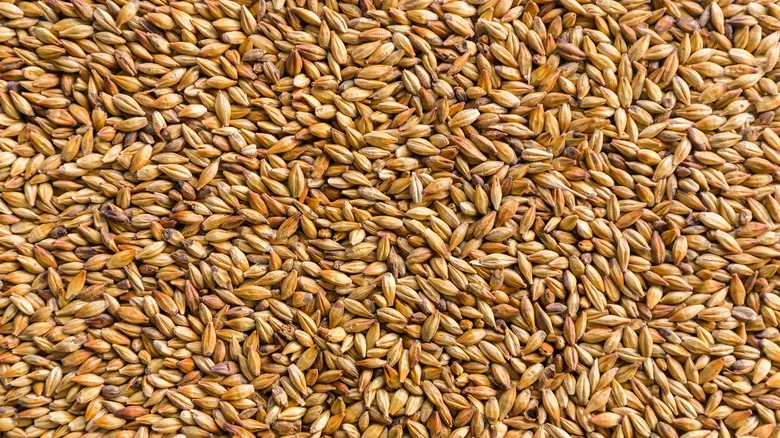
While malts contribute to a diverse range of fermented ales, they play a crucial role in highlighting the distinctive character of porters. Young openly recognizes that malts are a key feature of this style. "Many people will point to the various types of roasted malts used, and that's a valid observation," he notes. In contrast, Cilurzo explains that the aromas of burnt coffee or baking chocolate that rise from a pint of stout are the result of roasted barley doing its job.
Three centuries ago, Londoners were enjoying brews made with brown malts, but today’s craft brewers often enhance their recipes by incorporating multiple malt varieties. Edelson clarifies, "These beers combine pale malt, crystal malt, chocolate malt, and black malt, along with some raw grains," adding that this blend "will provide the rich color, mouthfeel, and roasted chocolate notes that define this style."
Crystal malts enhance the smooth texture of porters, contributing a deep brown hue. According to Simpsons Malt, an Imperial Porter typically includes Imperial Malts, creating a robust base that is both substantial in body and color.
Is cold weather the best time for sipping?
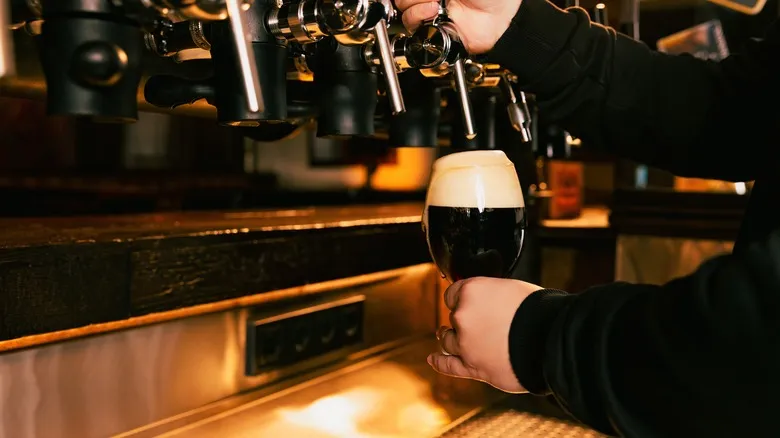
When is the ideal time to enjoy a refreshing pint of porter? You might say autumn and winter, given the flavors it offers. Porters are perfect for chilly nights spent snuggled under a blanket with a mystery novel in hand. Yet, their balanced profile provides enough versatility for enjoyment any time of year, no matter what the calendar indicates. In fact, many brewers believe that seasonality is subjective.
"Porters can be enjoyed year-round, even on a hot day," says Cilurzo, who argues that, aside from the stronger varieties, it's a beverage that can be as smooth as any ice-cold wheat lager. Edelson agrees, noting that while there is a tendency to choose drinks based on the light-dark spectrum of the seasons, "there's really no reason why porter can't be enjoyed all year round."
Whether at a summer barbecue or waiting for fall to embark on cozy pub crawls, revelers will fit right in with a porter in hand. In either scenario, this beer is always welcome.
How to store your porter
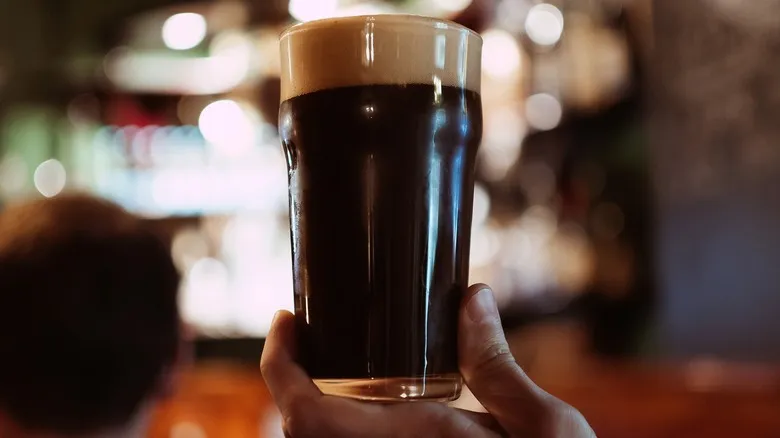
Understanding how to properly store your porter is essential for the best tasting experience. To fully enjoy its rich aromas and flavors, it’s important to keep it in the right conditions until you’re ready to open the bottle. According to Thompson Island Brewing Co., dark ales of this type can be stored for about six months before consumption, but it’s crucial to ensure that the storage environment is suitable for long-term preservation. If the beer is kept in a place with fluctuating temperatures, it can develop undesirable flavors; conversely, if it’s too cold, you may miss out on the delightful complexities that make porter enjoyable.
So, what do the experts suggest? Edelson advises keeping your beer in a cooler environment. Cilurzo explains, "Beers are carbonated with CO2, and as they warm up, more oxygen is released, which speeds up the oxidation process." Therefore, when storing your porter, it’s best to place it in a dry, stable area with temperatures between 45 and 55 degrees Fahrenheit, as recommended by Hop Culture, to maintain its quality.
That said, Young notes that "darker beers are definitely ones you should allow to warm up a bit." Once you’re ready to enjoy it (he recommends using a tulip-shaped glass), it’s perfectly fine for the beer to reach room temperature.
Recommended
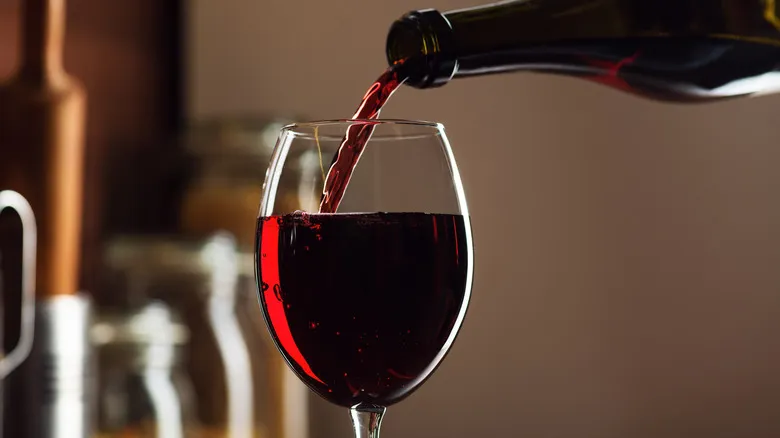
What Is Gatorwine? TikTok's Latest Drink Invention To Stretch Cheap Wine

The Best Kind Of Steak To Drink Beer With

If You're Drinking Wine At A Restaurant, This One Decision Will Save Money

What DOC Means On Italian Wine Labels
Next up

